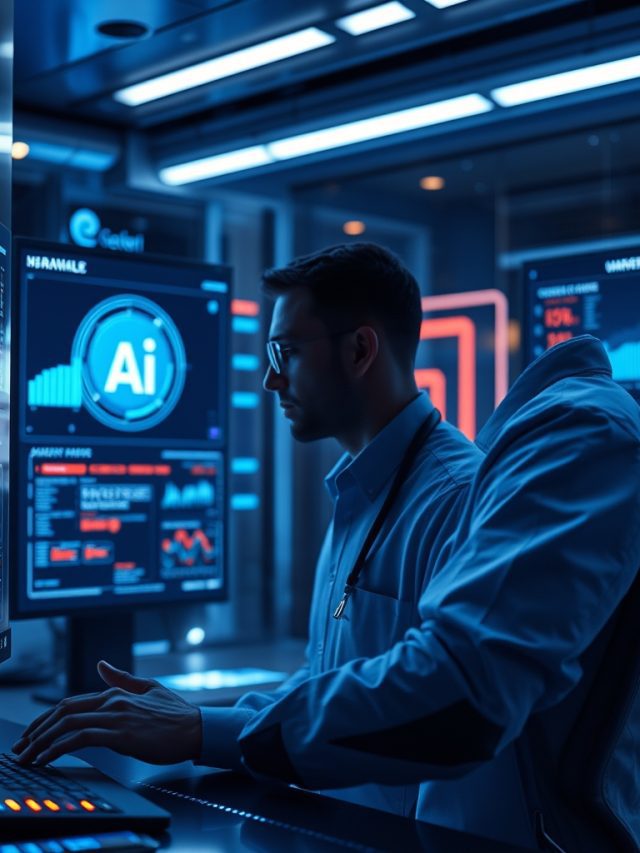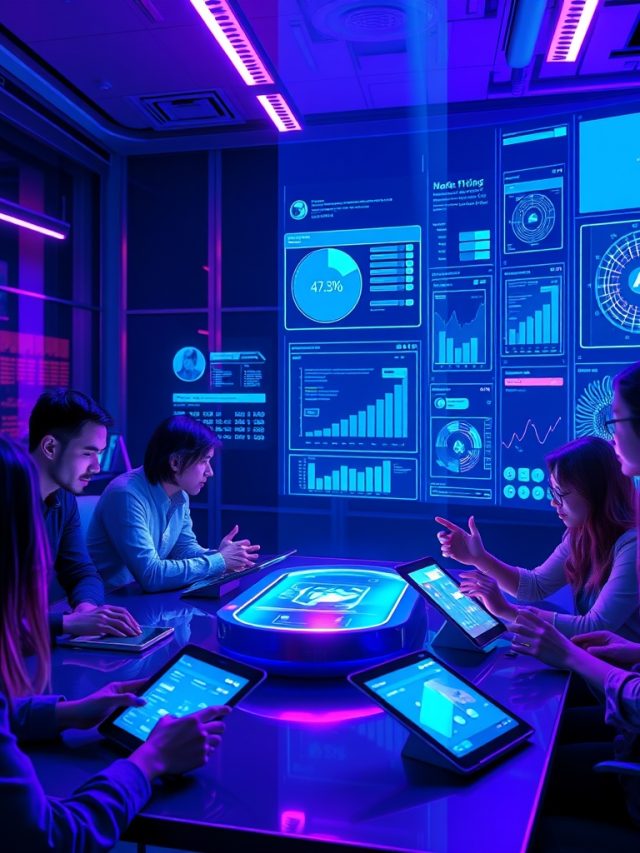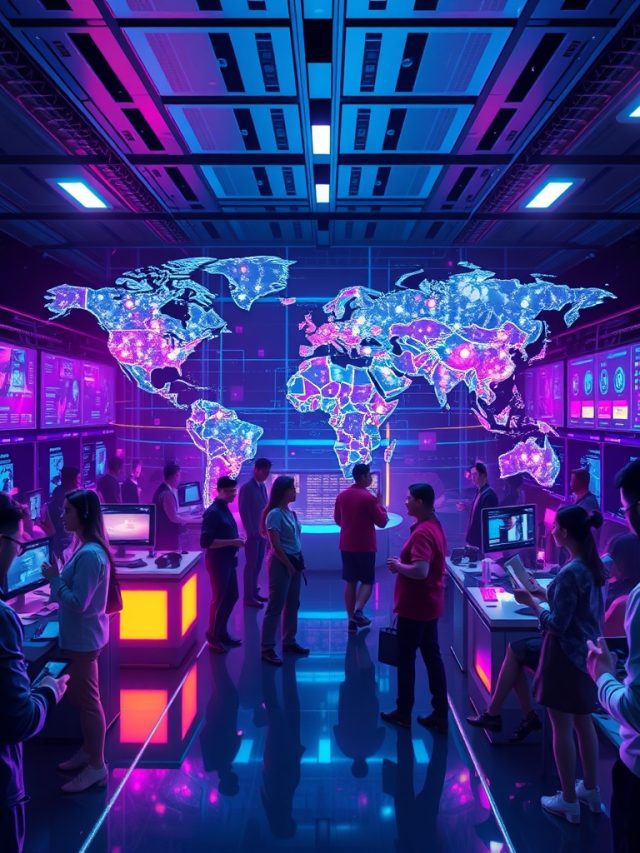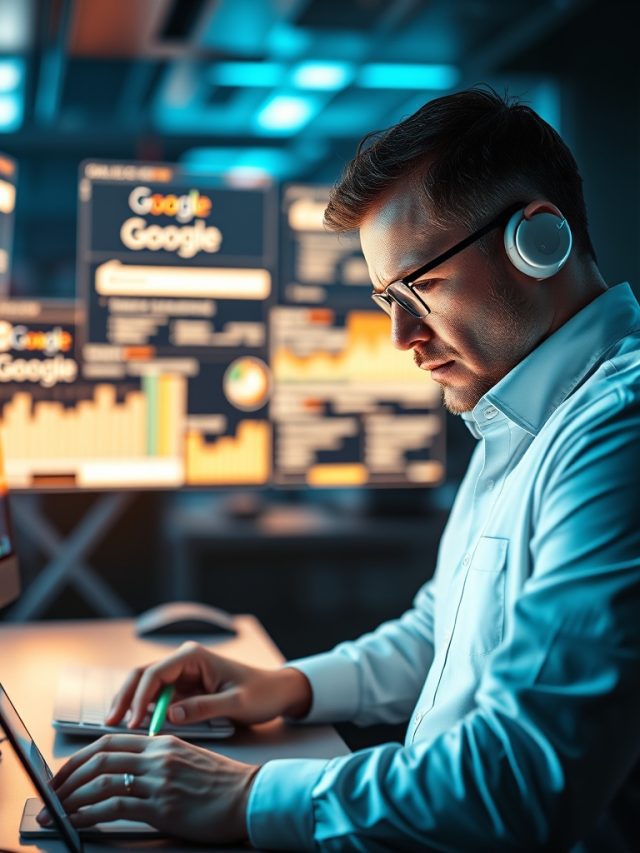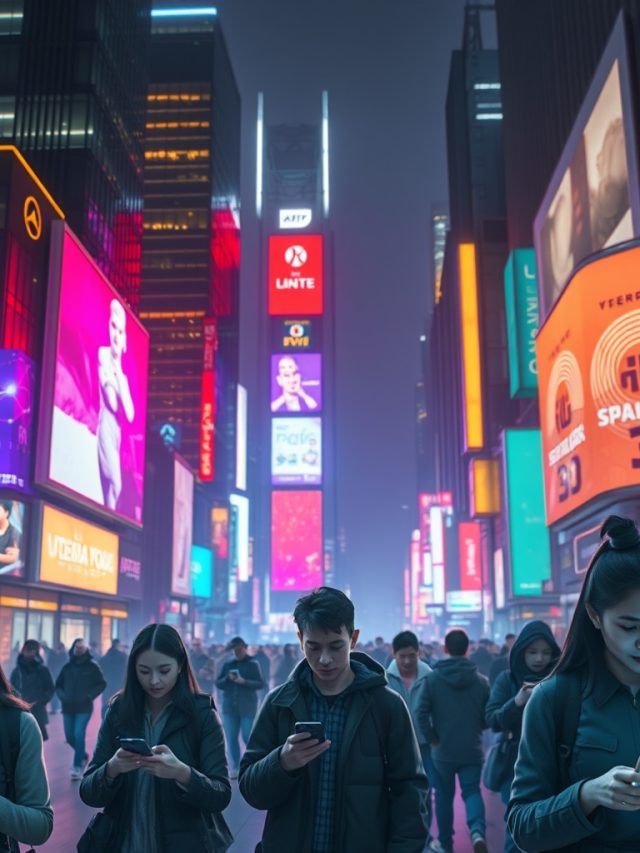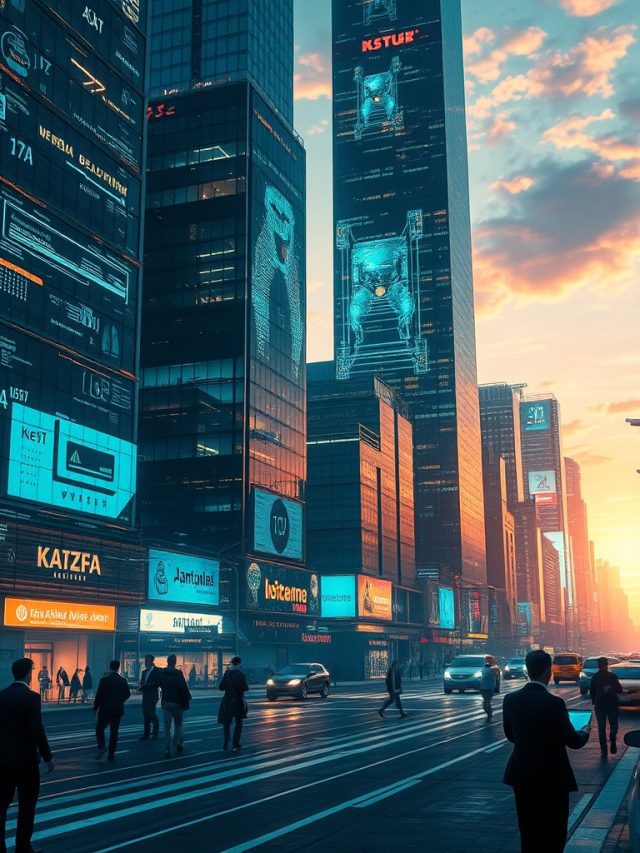Just a few years ago, the idea of creating a stunning, unique image from a simple line of text felt like science fiction. Businesses in the USA seeking high-quality visuals were locked into a familiar and expensive cycle: hiring photographers, paying for lengthy graphic design projects, or scrolling through endless pages of generic stock photos, hoping to find something that remotely fit their brand. This process was not only a drain on budgets but also a significant time sink, creating a major bottleneck for agile marketing and content creation.
Table of Contents
Today, that landscape has been completely transformed by AI image generation. This revolutionary technology has moved from a niche experiment to a mainstream powerhouse, democratizing visual creativity and offering a powerful competitive edge to anyone willing to embrace it. It’s not just a novelty; it’s a practical tool that is reshaping entire industries.
This article will explore the most impactful real-world applications of AI, diving deep into how businesses and creators are leveraging these tools to save time, slash costs, and unlock unprecedented creative potential. From a complete overhaul of marketing campaign workflows to providing practical solutions for industries like real estate and fashion, we will cover the top tools, the most effective techniques, and the critical legal considerations you need to know before you start creating your own AI generated images.
The Fundamentals: Understanding AI Image Generation
Before diving into the incredible applications, it’s important to understand the magic behind the curtain. How does a machine turn a phrase like “a photorealistic image of an astronaut riding a horse on Mars” into a detailed, coherent picture? The technology is complex, but the core concept is surprisingly intuitive.
How Does AI Create an Image from Words?
At the heart of most modern AI image generation tools is a technology called a “diffusion model.” In the simplest terms, the AI is trained on a massive dataset containing millions of images and the text that describes them. It learns the relationships between words and visual concepts—what a “dog” looks like, the style of “impressionist painting,” the mood of “cinematic lighting.”
When you provide a text prompt, the AI starts with a canvas of random digital noise—like static on an old TV screen. Then, step by step, it refines this noise, slowly shaping it to match the concepts in your prompt until a clear and detailed image emerges. It’s like a sculptor starting with a block of marble and chipping away everything that doesn’t look like the final statue.
The Leading Tools in the AI Art Space
The market for AI generated images is booming, but a few key players have emerged as the leaders. Each has its own unique strengths, making them suitable for different types of users and tasks. This is where the Midjourney vs DALL-E debate often begins, but they are just part of a larger ecosystem.
Comparing the Top AI Image Generation Platforms
| Feature | Midjourney | DALL-E 3 (via ChatGPT Plus) | Adobe Firefly | Canva Magic Media |
| Best For | Artists, designers, and users seeking highly stylized, artistic, or hyper-realistic outputs. | Beginners and professionals looking for ease of use, strong prompt understanding, and integration with text AI. | Creative professionals, agencies, and businesses prioritizing commercial safety and workflow integration. | Small businesses, marketers, and non-designers needing quick, easy visuals for social media and presentations. |
| Key Strength | Unmatched artistic quality and aesthetic control. Produces visually stunning and coherent images. | Superior natural language processing. Understands complex and conversational prompts exceptionally well. | Commercially Safe. Trained on Adobe Stock’s licensed library, minimizing copyright risks. Seamlessly integrates with Photoshop. | Extreme ease of use. Fully integrated into the Canva design platform, making it a one-stop-shop. |
| Ease of Use | Moderate. Requires using Discord and learning specific prompt syntax for best results. | Very Easy. Uses a simple conversational chat interface. | Easy. Clean web interface and direct integration into Adobe apps. | Very Easy. Simple text box right inside the familiar Canva editor. |
| Pricing Model | Subscription-based (starting around $10/month). No free tier. | Included with ChatGPT Plus subscription (around $20/month). | Included in most Adobe Creative Cloud plans. Also has a free tier with credits. | Included in Canva Pro subscription. Also has a limited free tier. |
| Commercial Use | Allowed under paid plans, but copyright is complex as it’s trained on public web data. | Allowed, but images are not copyrightable by the user in the US. Subject to OpenAI’s terms. | Designed for commercial use. Adobe offers indemnification for enterprise users, a major legal advantage. | Allowed under paid plans. Images are safe for commercial use within Canva’s platform terms. |
Understanding these tools is the first step. The next is seeing how they are being used to generate real business value. The platform you choose, whether it’s based on quality like Midjourney or safety like platforms that offer Adobe Firefly commercial use, will depend heavily on your specific needs.

The Marketing Revolution: AI in Advertising and E-commerce
Nowhere has the impact of AI image generation been felt more profoundly than in the world of marketing and advertising. For decades, the process of creating visual content was a major bottleneck. Today, AI in marketing is not just a buzzword; it’s a practical toolkit for creating high-impact visuals at an unprecedented scale and speed.
Creating Endless Content for Ads and Social Media
Marketing teams are in a constant race to produce fresh, engaging content. AI for social media content has become an indispensable ally in this race. Instead of relying on a limited library of stock photos, marketers can now generate an endless stream of unique, on-brand images tailored to specific campaigns, holidays, or target audiences.
A/B Testing on Steroids
One of the most powerful applications is in A/B testing. In the past, creating multiple versions of an ad to see which performed best was a slow and costly process. With AI generated images, a marketer can create dozens of variations of a single ad concept in minutes. They can test different backgrounds, color schemes, model demographics, and calls to action, allowing for rapid, data-driven optimization that was previously unimaginable.
Real-World AI in Advertising Examples
The proof is in the campaigns. Major brands are no longer just experimenting with AI; they are building entire successful campaigns around it, creating powerful generative AI examples for the rest of the industry to follow.
Instance 1: Heinz’s “A.I. Ketchup”
In a brilliant marketing move, Heinz used the AI image generator DALL-E 2 to demonstrate its brand dominance. They prompted the AI with a wide range of phrases, from simply “ketchup” to “ketchup in a renaissance painting.” The AI, trained on vast data from the internet, consistently produced images that looked like a Heinz ketchup bottle. The campaign was a viral sensation, reinforcing their brand identity and generating over 1.15 billion impressions.
Instance 2: Coca-Cola’s “Create Real Magic”
Coca-Cola took a more interactive approach by launching a platform that allowed users to co-create digital art using the brand’s iconic assets, like its bottle and script logo. This user-generated content campaign, powered by AI, drove massive engagement and made customers part of the creative process, a landmark among AI in advertising examples.
Transforming E-commerce with Virtual Photoshoots
For online retailers, high-quality product photography is non-negotiable, but it’s also incredibly expensive. The application of e-commerce product photos AI is changing the game. Businesses can now take a single, clean shot of their product and use AI to place it in hundreds of different lifestyle settings, on different models, and in various contexts.
This is a massive benefit for AI for small business, as it levels the playing field. A startup can now have a product catalog with the visual diversity of a major corporation without the six-figure photoshoot budget. This is one of the most practical and cost-effective real-world applications of AI today.
A New Creative Frontier: AI for Arts and Entertainment
While the business applications are profound, AI image generation is also fueling a creative renaissance. Artists, designers, and creators in the entertainment industry are adopting these tools not as a replacement for human creativity, but as a powerful new collaborator that can augment and accelerate their workflows.
A Powerful Tool for Artists and Designers
For creative professionals, AI for graphic design has become the ultimate brainstorming partner. It can be used to:
- Generate Concept Art: Quickly visualize complex characters, environments, and ideas.
- Create Mood Boards: Instantly generate a collage of images that capture a specific aesthetic or mood.
- Overcome Creative Blocks: When inspiration runs dry, a few prompts can spark new ideas and push a project in an unexpected direction.
In the film and gaming industries, this has dramatically sped up the pre-production process. Studios can generate countless variations of a character’s costume or a fantastical landscape in the time it would have taken a concept artist to sketch just one.
The Rise of the AI-Assisted Author and Creator
The democratization of creativity extends to independent creators as well. Authors and bloggers, who often operate on tight budgets, are now using AI generated images to create professional-quality book covers and custom illustrations for their articles. This allows them to produce visually compelling work without the high cost of hiring a designer, giving their projects a polished look that was previously out of reach.
AI Art in the Fine Art World
The impact of this technology has reached the highest echelons of the art world. In a moment that signaled a major shift, an artwork created entirely by an AI algorithm made headlines.
Instance: Christie’s Auction
The piece, titled “Edmond de Belamy,” was generated by a Generative Adversarial Network (GAN) developed by the Paris-based collective Obvious. In 2018, it went up for auction at the prestigious Christie’s auction house and sold for an astonishing $432,500. This event sparked a global debate and solidified AI image generation as a legitimate, and valuable, new medium in the art world. It stands as one of the most high-profile generative AI examples to date.
Transforming Industries: Niche Real-World Applications of AI
Beyond the broad strokes of marketing and art, AI image generation is being deployed in highly specialized ways across a variety of industries, solving unique problems and creating new efficiencies. These niche real-world applications of AI demonstrate the true versatility of the technology.

Real Estate: Selling Homes Faster with Virtual Staging
An empty house can be difficult for potential buyers to envision as a home. Traditional physical staging is expensive and logistically complex. This is where virtual home staging AI comes in.
Real estate agents can now upload photos of an empty room and use AI tools to instantly furnish it in a variety of styles, from modern to classic to bohemian. This helps buyers connect emotionally with the space. According to industry reports, virtual staging can make listings more attractive and help sell properties up to 73% faster. The AI can also be used to declutter photos of occupied homes or even enhance the curb appeal in exterior shots by adding a green lawn and a blue sky.
Fashion and Interior Design
- Fashion: Designers are using AI generated images to brainstorm new clothing lines, experiment with different fabric patterns, and create realistic mockups of their designs on virtual models. This allows for rapid prototyping and trend exploration without the cost and waste of producing physical samples.
- Interior Design: Similar to real estate, interior designers use AI to show clients multiple design concepts for their space in minutes. They can generate visualizations with different furniture, color schemes, and layouts, helping clients make decisions faster and providing a clear, tangible vision of the final result.
Education and Science
- Education: Teachers and corporate trainers are creating custom visual aids, historical scenes, and scientific diagrams to make learning materials more engaging. An AI image generation tool can instantly create an illustration of a Roman chariot or a diagram of a plant cell, making complex topics easier to understand.
- Science and Medicine: In highly technical fields, AI is used to generate detailed anatomical illustrations, visualize complex molecular structures, and create diagrams for scientific research papers, aiding in both discovery and communication.
The User’s Guide: Copyright, Prompts, and Best Practices
As with any powerful new technology, using AI image generation effectively and responsibly requires some knowledge and skill. Understanding the legal landscape, learning how to communicate with the AI, and leveraging its more advanced features are key to getting the most out of these tools.
The Billion-Dollar Question: Copyright AI Generated Images
This is perhaps the most critical—and most misunderstood—aspect for businesses. The legal landscape is still evolving, but the current stance in the United States is clear.
The U.S. Copyright Office has ruled that works created solely by an AI, without significant human creative input, are not eligible for copyright protection by the user. This means if you simply type a prompt and use the resulting image, you don’t own it, and it could theoretically be used by anyone. To claim any ownership, you must demonstrate “significant human authorship,” which could include heavily editing the image, combining it with other original work, or using it as a component in a larger creative project. This is a major risk when creating unique brand assets.
The Adobe Firefly Advantage
This legal uncertainty is why tools like Adobe Firefly have become so popular in the corporate world. Because Firefly is trained exclusively on Adobe’s licensed stock library and content in the public domain, it is designed to be commercially safe. The company even offers legal indemnification for enterprise users, a significant benefit that addresses the concerns around copyright AI generated images.
How to Write AI Art Prompts That Actually Work
The quality of your output depends almost entirely on the quality of your input. Learning how to write AI art prompts is a skill in itself. A simple prompt like “a dog” will produce a generic image. A great prompt is descriptive and structured.

The Formula for a Great Prompt
A good structure to follow is:
Subject + Style/Medium + Setting + Composition/Lighting + Details/Mood
- Example (Simple): “a cat”
- Example (Detailed): “A cinematic photo of a fluffy ginger cat sleeping on a stack of old books in a cozy, sunlit library, close-up shot, warm and nostalgic mood.”
Beyond Creation: AI Image Editing
Many modern AI platforms offer powerful editing features that go beyond just creating new images from scratch. This is where AI image editing becomes a critical part of the creative workflow.
Inpainting & Outpainting
- Inpainting: This feature allows you to select an area within an existing image and tell the AI to replace it. You can remove an unwanted person from a photo, change a subject’s clothing, or add a new object that blends in seamlessly.
- Outpainting: This feature expands an image beyond its original borders. The AI intelligently generates new content around the edges of the picture, allowing you to turn a vertical portrait into a wide landscape shot or extend a background to fit a specific format.
Conclusion
From revolutionizing marketing to empowering small businesses and sparking a new wave of creativity, the real-world applications of AI image generation are already vast and continue to grow every day. This technology is no longer a futuristic novelty; it is a practical, accessible, and powerful strategic tool. AI generated images are helping companies save enormous amounts of time and money, enabling them to produce higher quality visual content faster than ever before.
As the models become more sophisticated and the tools become more integrated into our daily workflows, the ability to create compelling visuals from a simple thought will become second nature. For businesses, creators, and professionals in the USA, the message is clear: the time to start experimenting with AI image generation is now. By embracing this technology, you can unlock new efficiencies, enhance your creative output, and gain a significant advantage in an increasingly visual world.
Frequently Asked Questions (FAQs)
1. Can I use AI-generated images for my company’s logo?
It is generally not recommended. Because you cannot copyright an image generated solely by AI in the US, you would not have exclusive ownership of your logo, leaving your brand vulnerable. For critical assets like logos, it’s safer to work with a human designer or use an AI image as inspiration for a final, heavily modified design.
2. What’s the best AI image generator for creating realistic photos of people?
Midjourney is widely regarded as one of the best tools for creating hyper-realistic photos of people, although it has a steeper learning curve. DALL-E 3 is also excellent and more user-friendly. The key to realism lies in writing highly detailed prompts that specify lighting, camera settings (like lens type), and subtle expressions.
3. Are there any ethical concerns I should be aware of when using AI image generation?
Yes. Key concerns include the creation of deepfakes (realistic but fake images/videos of people), the potential for perpetuating biases present in the training data, and the impact on the livelihoods of human artists and photographers. It’s important to use the technology responsibly and transparently.
4. How much does it cost to use these AI image tools?
Costs vary. Some tools like Canva offer a limited free tier. Most high-quality generators operate on a subscription model, typically ranging from $10 to $30 per month, which often includes a certain number of image generations or “fast” processing hours.
5. Will AI replace human graphic designers and artists?
Most experts believe AI will be a tool that augments, rather than replaces, human creativity. It will automate repetitive tasks and act as a powerful brainstorming partner, freeing up designers and artists to focus on higher-level strategy, creative direction, and the nuanced final touches that still require a human eye.
6. How can I ensure the AI images I create are consistent with my brand’s style?
To maintain brand consistency, you need to use highly detailed and repeatable prompts. Specify your brand’s exact color palette (using hex codes if possible), define the desired artistic style (e.g., “minimalist flat illustration,” “vibrant and optimistic photo”), and use recurring visual elements in your prompts.
7. What are “negative prompts” and why are they important?
A negative prompt is a command that tells the AI what not to include in the image. They are very important for refining your output. For example, if you are getting blurry or poorly drawn hands, you could add a negative prompt like “–no blurry, extra fingers, poorly drawn hands” to improve the result.
8. Can AI create images with readable text in them?
This has historically been a major weakness of AI image generators, which often produce nonsensical or garbled text. However, newer models like DALL-E 3 have significantly improved their ability to render clear, accurate text, though it can still be hit-or-miss for complex phrases.
9. What is the difference between AI image generation and AI image upscaling?
AI image generation creates a brand new image from scratch based on a text prompt. AI image upscaling takes an existing low-resolution image and uses AI to intelligently increase its size and quality, adding detail and sharpness without making it look pixelated.
10. How can a complete beginner get started with AI image generation?
The easiest way for a beginner to start is with a user-friendly, web-based tool like Canva’s Magic Media or Microsoft Copilot (which uses DALL-E 3). These platforms have simple interfaces and don’t require any special software, allowing you to start experimenting with prompts immediately.

